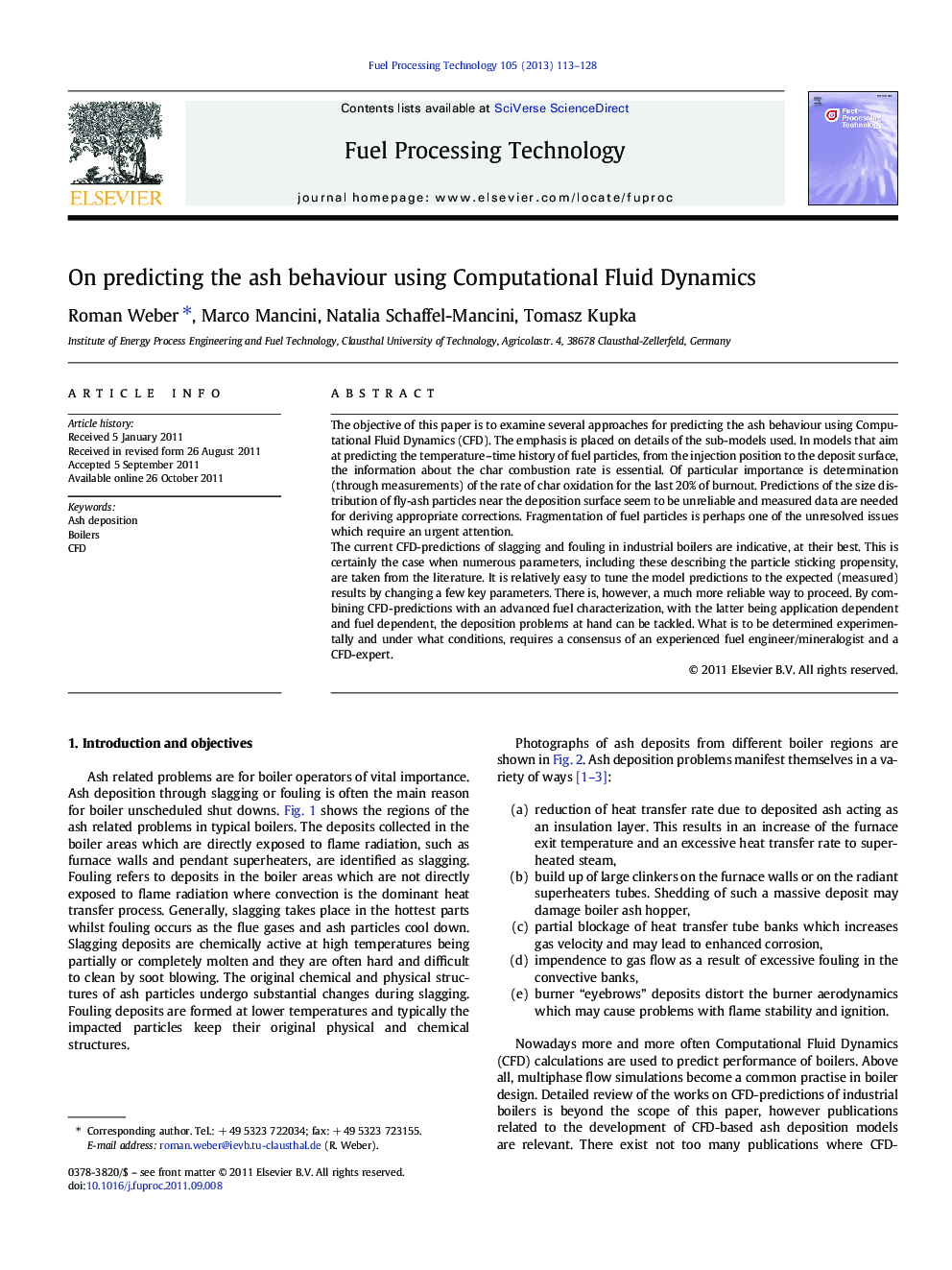| کد مقاله | کد نشریه | سال انتشار | مقاله انگلیسی | نسخه تمام متن |
|---|---|---|---|---|
| 210344 | 461706 | 2013 | 16 صفحه PDF | دانلود رایگان |

The objective of this paper is to examine several approaches for predicting the ash behaviour using Computational Fluid Dynamics (CFD). The emphasis is placed on details of the sub-models used. In models that aim at predicting the temperature–time history of fuel particles, from the injection position to the deposit surface, the information about the char combustion rate is essential. Of particular importance is determination (through measurements) of the rate of char oxidation for the last 20% of burnout. Predictions of the size distribution of fly-ash particles near the deposition surface seem to be unreliable and measured data are needed for deriving appropriate corrections. Fragmentation of fuel particles is perhaps one of the unresolved issues which require an urgent attention.The current CFD-predictions of slagging and fouling in industrial boilers are indicative, at their best. This is certainly the case when numerous parameters, including these describing the particle sticking propensity, are taken from the literature. It is relatively easy to tune the model predictions to the expected (measured) results by changing a few key parameters. There is, however, a much more reliable way to proceed. By combining CFD-predictions with an advanced fuel characterization, with the latter being application dependent and fuel dependent, the deposition problems at hand can be tackled. What is to be determined experimentally and under what conditions, requires a consensus of an experienced fuel engineer/mineralogist and a CFD-expert.
Journal: Fuel Processing Technology - Volume 105, January 2013, Pages 113–128